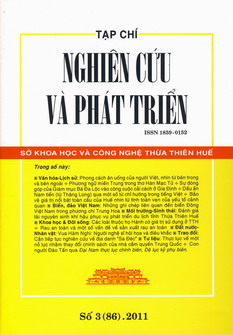Dấu ấn Nam tiến (từ Thăng Long) qua một số từ chỉ hướng trong tiếng Việt/The Stamp of the Southward March (from Thăng Long) Through Some Vietnamese Directional Words
Tóm tắt
Từ chỉ hướng trong địa danh ở miền Nam rất phổ biến, nhất là ở Nam Bộ, vì nơi đây vốn đất rộng người thưa nên yêu cầu định hướng địa danh rất cao. Hầu hết các từ chỉ hướng này đều lấy mốc là vị trí của người nói. Điều này có ưu điểm ở chỗ nó hàm chứa yếu tố tiền giả định về phương hướng nên tiết kiệm được lời nói. Tuy nhiên, việc lấy vị trí người nói làm mốc để định hướng địa danh cũng cho thấy nét cảm tính, chủ quan, hướng nội của người dân Nam Bộ nói riêng và Việt Nam nói chung. Đồng thời, quan niệm và cách dùng từ chỉ hướng như vậy cũng thể hiện dấu ấn Nam tiến như là một kiểu ký ức của dân tộc.
ABSTRACT
Directional words are very common in the South, especially in the Mekong Delta where the need of orientation is necessary because of its “vast land with sparse population”. Most of those directional words take the speaker’s position to be the landmark. This has an advantage of containing presupposal elements of direction, so people can be sparing with words. Besides, the use of speaker’s position as a landmark to orientate shows emotional, subjective, inward characteristics of the Southern people in particular and Vietnamese people in general. Moreover, such conception and use of directional words also manifest the stamp of the southward march as a type of national memories.

